Entries tagged with “drywall”.
Did you find what you wanted?
Wed 27 Nov 2013
Posted by admin under Asbestos, Building Survey, Dermal, Drywall, Dust, Exposure, Fall Protection, Gloves, hearing protection, Ladder, Ladders, Lead, Leaded Sheetrock, Management, Noise, occupational hygiene, OSHA, Powder Actuated Tool, Respirators, safety, Silica, Uncategorized
Comments Off on Top 10 Hazards of drywall
I titled this post, “hazards of drywall”, but it encompassing most of the common hazards of plaster, mud, gypsum, wall-hangers, tapers, and acoustic employees.
-
Corrosive drywall.
I have not dealt with this subject on a personal level. However, AIHA has a new guidance document titled, “Assessment and Remediation of Corrosive Drywall: An AIHA Guidance Document“, which is a clarification of an earlier white paper document from 2000, titled, “Corrosive Drywall“. The danger is from a specific type of drywall which was imported from China. After installation it is known to emit sulfide vapors, which corrode copper (electrical wires), and can give off a sulfur smell (HT to JeffH in Ohio).
-
Asbestos in mud/plaster.
Be aware, some older buildings (pre 1980s) may have asbestos in the mud compound or plaster (not as common). This will be a concern if you are performing demo on these walls. Info here.
-
Silica (dust) in joint (mud) compound.
Some types of silica I have found to have silica. This can be an issue when sanding. AND, if you install drywall like me…you do a lot of sanding. More information from an earlier post can be found here. NIOSH has some suggestions too.
- Leaded sheetrock. If you are installing (or demo) leaded sheetrock, you NEED to protect yourself. Airborne levels of lead can approach the exposure limits, even during installation. More info here.
- Lead in paint. If you’re tying into existing plaster/drywall and there’s paint, you need to know if there’s lead in it. Sanding on the paint is a good way to be exposed. More info here.
- Ergonomics. Hanging the wallboard takes a toll on your body after 20 years (or less). Not to mention sanding. Washington OSHA (L&I) has a good demo.
- Noise. Cutting steel studs, powder actuated tools (there’s lead exposure too, you know).
- Skin hazards. Cutting, but also dermatitis from prolonged exposure to dust.
- Eye hazards. Dust, carpentry, etc. Working overhead is an easy way to get falling items in your eyes.
- Falls. Last on my list, but certainly not the least. Scaffolding, working from ladders, and using stilts, to name a few.
Wed 25 Apr 2012
This blog-post is directed to employees….the drywall framers, hangers, tapers, fireproofers & plasteres who sand and finish mud & drywall.
Question: What type of respirator do you wear when you sand?
…answer? Anything I can find.
This question misleading… and is similar to the one where the attorney asks in divorce court, “Do you beat your wife only when you’re drunk, or all the time?”
But, reiterate.  Do you ever NOT wear a respirator when sanding? Answer: No. We always wear a respirator. It’s dusty.
So if I may ask a leading question (as a bad attorney): What type of respirator would you wear if you were worried about OVERexposure?
Answer: a tight fitting 1/2 face (or full face, for eye protection & fogging control) negative pressure respirator with HEPA cartridges.
I think I’ve made my point. Why would you choose a paper dust mask? The fit is mediocre, they are disposable, you cannot fit test them (very well). Who cares if it’s a N95 or P100. You can feel the dust escaping around your nose. Below are some “average” pictures of people sanding. What will you do?  more info here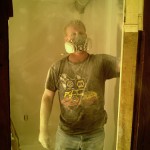
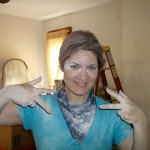
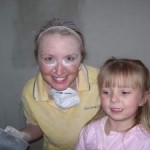
Tags: drywall, dust, fit test, framer, hanger, HEPA, IOM, mud, n95, p100, plaster, PPE, respirator, sand, sanding, tape, taper, tight fitting
Thu 16 Feb 2012
For employees (carpenter, laborer, iron worker, plumber, electrician) using powder actuated tools, please take caution! There are possible airborne lead exposures during powder actuated tool use.
The best safety practice is to eliminate the hazard. In this case there are two easy alternatives;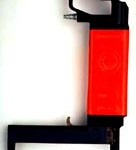
- using lead-free loads, or
- using a pneumatic type nailer (like this one made by Pneutek, Hilti makes a CO2 type as well)
However, if you are an employee, I realize there are times that you are not given a choice. If this is the case, please consider:
- asking for the MSDS for the primer loads (look for lead styphnate, or similar)
- lead exposure can occur by inhalation and by ingestion (wash!)
- wash & be diligent around eating & what you “take home” to your family
- lead exposure to children is serious (they absorb lead better & it causes more detrimental health effects)
- respirators might be required when using these tools (so wear one!)
- working overhead (nailing into ceiling) might have higher airborne levels than other positions
- bringing up these concerns with your safety professional onsite
- performing air monitoring to determine airborne levels (although for the price of an industrial hygiene consultant, you could own a CO2 actuated tool)
- reading more about it from my earlier post here.
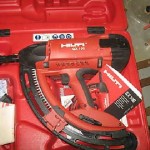
Tags: carpenters, concrete, drywall, electrician, framers, hilti, iron workers, laborer, Pb, plumber, steel stud framing




